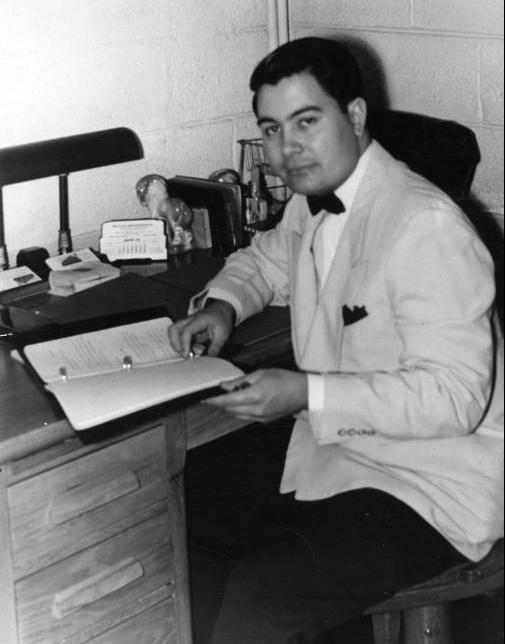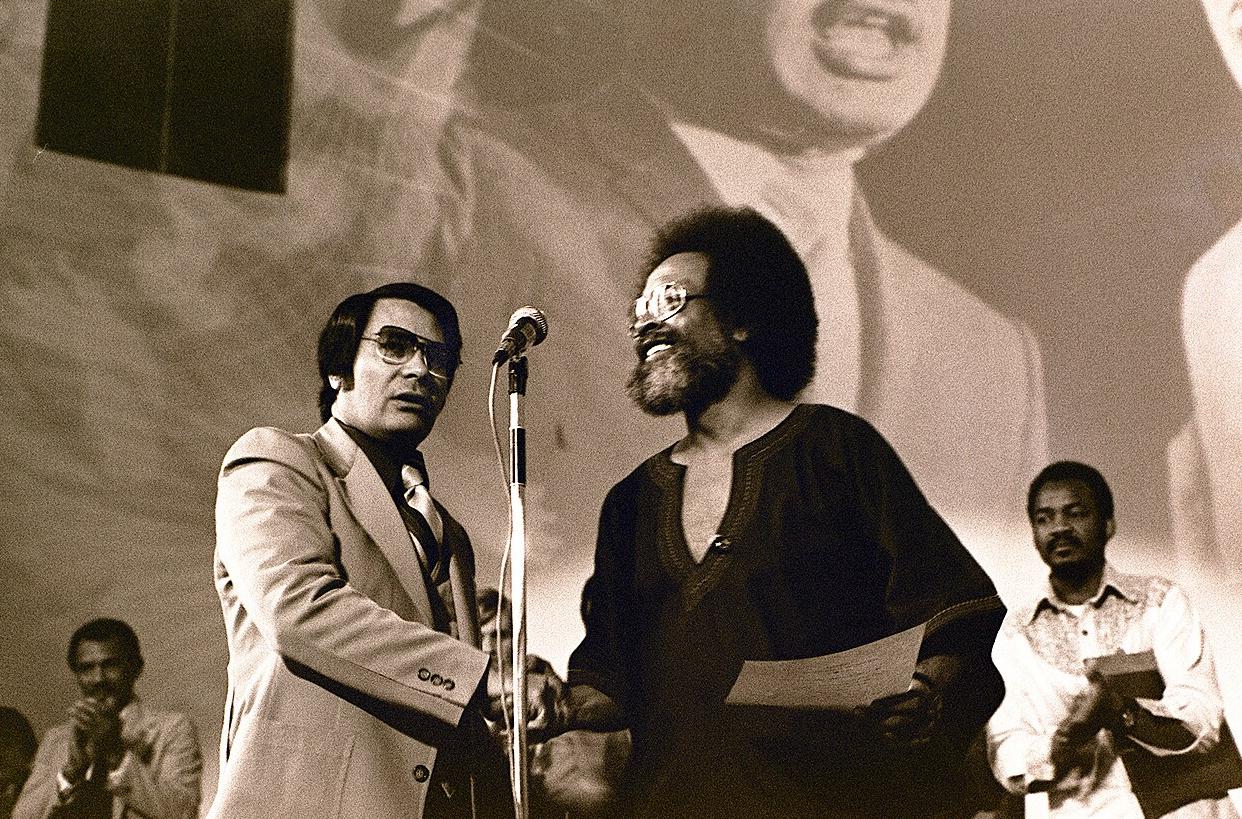
Photo info …
Credit: Nancy Wong via Wikimedia CommonsView Source
(May 13, 1931-Nov. 18, 1978). Founder of Peoples Temple Full Gospel Church and a colony at Jonestown, Guyana, where over 900 participated in mass murder-suicide, James Warren (Jim) Jones was born in Crete, Indiana. He graduated from Richmond High School, worked at Reid Memorial Hospital, and later married. After attending Indiana University, Bloomington (1949-1951), he moved to Indianapolis where he intended to continue his studies and enter law school.

In June 1952, Jones became student pastor at the southside Somerset Methodist Church where he began healing services and a campaign for racial integration. Around 1954, he established “Community Unity,” an integrated congregation at Hoyt and Randolph streets, and preached occasionally at Laurel Street Tabernacle (Assembly of God), drawing large crowds.
By 1956, he moved his church, renamed “Wings of Deliverance” and later “Peoples Temple,” to 15th and North New Jersey streets, attracting defectors from his previous congregations. That June, Jones organized a massive religious convention at , which drew a racially mixed audience exceeding 11,000 people.
He later moved his church to the former Indianapolis Hebrew Congregation synagogue at 10th and Delaware streets and invited Archie James, an African American, to serve as associate pastor in his effort to integrate the church fully. Jones quickly attracted followers through psychic discernment, prophecy, speaking in tongues, and healing. He also began a social ministry, opening a soup kitchen that served nearly 3,000 meals a month, providing nursing care for the elderly, and unsuccessfully promoting a Cuban refugee relocation program for Indianapolis.
In 1960, the Temple became affiliated with the Indianapolis-based ), which applauded Jones for his ministry among the poor. Mayor named Jones to chair the (1961-1962) where he garnered great publicity for his promotion of neighborhood and public facility integration. During this time, Jones took classes at Butler University from which he later received an education degree.
In 1962, following a rash of racist attacks on his home at 2327 Broadway and an alleged vision of nuclear destruction, Jones began a search for a new site for Peoples Temple. He took his multiracial “rainbow family” to Brazil, South America, but returned home to his foundering church in December 1963 and was later ordained by the Disciples of Christ (1964).
The next year, casting himself as a prophet who envisioned impending nuclear war, Jones led over 140 church members from Indianapolis to settle and establish their church in Redwood Valley, California. Following his October 1971 return to Indianapolis to conduct a healing crusade, the launched an investigation of Jones’ ministry, focusing on alleged abuses, fake healings, and mass hypnosis.

By 1972 Jones had established congregations in San Francisco (where he served on the city’s housing authority) and Los Angeles, as well as followings in a dozen smaller cities. In early 1972, reporter Carolyn Pickering contacted the for information about Jones’ transplanted church, which led to a long-term investigation of Peoples Temple.
Jones also established Jonestown, a commune outpost in Guyana, where most Temple members fled in 1977 following adverse newspaper coverage and government probes. During a congressional investigation of the Temple, U.S. Representative Leo J. Ryan of California and several reporters were murdered in Guyana as defectors attempted to leave the commune on November 18, 1978. Later that day Jones led his followers to mass suicide by drinking a cyanide-laced fruit drink in a previously rehearsed ritual.
In the aftermath, Jones received mixed reviews from the Indianapolis public and press. Many praised his work among the city’s poor and homeless and his crusades against racism and discrimination. Others portrayed him as an unbalanced, power-hungry fanatic who believed himself to be God. Analyses in the Indianapolis press compared Jones with other notorious Hoosiers— mass murderer Charles Manson and Symbionese Liberation Army terrorist William Harris.

Help improve this entry
Contribute information, offer corrections, suggest images.
You can also recommend new entries related to this topic.

